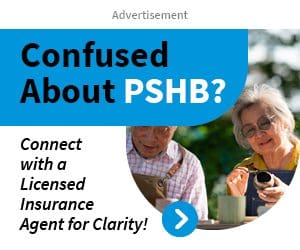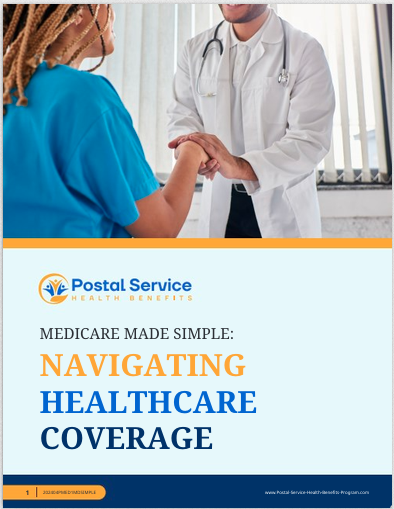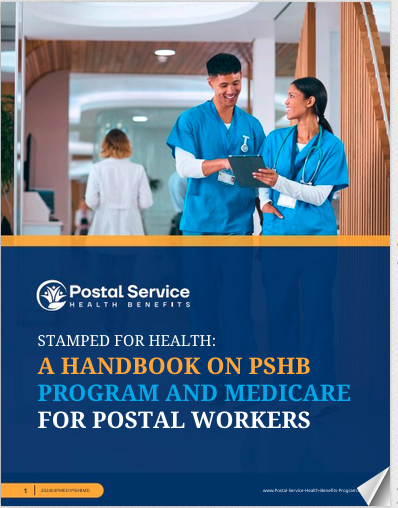Key Takeaways
-
The PSHB transition changes how postal employees and their families manage healthcare coverage, emphasizing the need for proactive planning and understanding of benefits.
-
Medicare integration and eligibility rules for dependents play crucial roles in determining the cost and scope of PSHB coverage in 2025.
Navigating the 2025 PSHB Transition: What It Means for Families
The Postal Service Health Benefits (PSHB) program is now the standard for health coverage for USPS employees, annuitants, and their dependents. This significant shift replaces the Federal Employees Health Benefits (FEHB) program, introducing new rules, options, and considerations. If you’re navigating this change, it’s important to understand how your family’s coverage is impacted.
Understanding the PSHB Transition
The PSHB program officially began on January 1, 2025, following the last Open Season enrollment period held in late 2024. If you didn’t make changes during Open Season, your previous FEHB coverage likely transitioned to an equivalent PSHB plan automatically. However, verifying that your current plan aligns with your family’s needs is essential.
What Stays the Same and What Changes?
While PSHB retains the fundamental structure of comprehensive health coverage, several aspects differ significantly from FEHB:
-
Eligibility Requirements: PSHB expands or adjusts eligibility for certain dependents, including children up to age 26. This includes stepchildren and adopted children.
-
Medicare Integration: Medicare-eligible retirees and dependents must now coordinate with PSHB coverage. Enrollment in Medicare Part B is mandatory for many.
-
Pharmacy Benefits: Prescription drug coverage is streamlined through Employer Group Waiver Plans (EGWPs), which align with Medicare Part D for eligible members.
Coverage for Families and Dependents
PSHB coverage includes several categories of dependents, and knowing who qualifies can save you time and stress. Let’s break down what you need to know:
-
Children: Dependents under 26 are eligible for coverage, regardless of marital or student status. This provision applies uniformly, ensuring that your children remain covered without requiring additional verification.
-
Spouses: Your spouse is automatically eligible for coverage, provided you’ve included them in your plan. For Medicare-eligible spouses, coordination with Part B is required to maintain PSHB benefits.
-
Special Needs and Disabled Dependents: Adult children with disabilities may qualify for continued coverage beyond age 26, provided their condition existed before they aged out of standard eligibility. Documentation is essential for this exception.
Impact of Medicare Integration on Families
If you or your family members are Medicare-eligible, the interplay between Medicare and PSHB becomes a crucial consideration. PSHB plans work with Medicare Part B to reduce overall healthcare costs, but this coordination comes with specific requirements:
-
Enrollment Requirement: Most Medicare-eligible postal annuitants and dependents must enroll in Part B to retain PSHB coverage. This integration provides enhanced benefits, such as reduced copayments and access to expanded pharmacy networks.
-
Premium Reimbursements: Many PSHB plans offer partial reimbursements for Medicare Part B premiums. Confirm whether your plan includes this benefit, as it can significantly offset costs.
-
Prescription Drug Coverage: Eligible members automatically receive drug coverage through an EGWP, simplifying prescription costs and administration.
Cost Considerations for Families
While PSHB aims to maintain affordability, it’s essential to understand the associated costs:
-
Premiums: Premiums vary depending on your plan’s coverage tier (Self Only, Self Plus One, or Family). Many employees find the Family tier offers comprehensive coverage for dependents at a manageable cost.
-
Deductibles and Out-of-Pocket Expenses: Each plan under PSHB has its own deductible and out-of-pocket maximum. For families, reviewing these limits helps prevent unexpected financial burdens.
-
Medicare Coordination Savings: Medicare integration often results in reduced out-of-pocket costs for retirees and eligible dependents. This benefit is especially advantageous for families managing chronic conditions or frequent medical needs.
The Importance of Open Season and Qualifying Life Events
Although Open Season enrollment for 2025 has ended, understanding its significance prepares you for future enrollment periods. Open Season allows:
-
Plan Changes: You can switch plans or coverage tiers based on evolving family needs.
-
Dependent Additions: Adding new dependents, such as a newborn or newly adopted child, ensures uninterrupted coverage.
Outside Open Season, you can only make changes during Qualifying Life Events (QLEs), such as:
-
Marriage or divorce
-
Birth or adoption of a child
-
Loss of other health insurance coverage
What Happens If You Missed Open Season?
If you missed making changes during Open Season, your family’s coverage likely rolled over to a corresponding PSHB plan. However, take time now to:
-
Review Your Plan: Confirm that your current plan meets your family’s healthcare needs and budget.
-
Understand Limits: Familiarize yourself with deductibles, copayments, and out-of-pocket maximums.
-
Prepare for Next Year: Mark your calendar for the next Open Season to ensure timely updates.
Special Focus: Transitioning Retirees with Families
If you recently retired, the transition to PSHB brings unique considerations for your family:
-
Medicare Enrollment Deadlines: Retirees and their eligible dependents must enroll in Medicare Part B within specific timelines to avoid penalties.
-
Plan Adjustments: Retired families may need to reassess their plan choices to balance premiums and out-of-pocket costs.
-
Financial Assistance: Explore whether your plan offers reimbursement for Medicare premiums, which can alleviate financial strain.
PSHB and Pharmacy Benefits for Families
For families managing regular prescriptions, PSHB’s pharmacy benefits are a significant advantage. Features include:
-
Simplified Access: The EGWP ensures seamless integration with Medicare Part D for eligible members.
-
Lower Costs: Generic and preferred drugs often come with reduced copayments.
-
Automatic Enrollment: Medicare-eligible family members are automatically enrolled in Part D coverage through their PSHB plan, eliminating the need for separate enrollment.
Tips for Navigating the Transition
The PSHB transition can feel overwhelming, but staying informed and proactive simplifies the process. Here are a few tips:
-
Check Eligibility: Review who qualifies as a dependent under PSHB to ensure all family members are covered.
-
Verify Medicare Enrollment: For retirees and Medicare-eligible family members, confirm that Part B enrollment is complete.
-
Compare Plans: Use resources provided during Open Season to evaluate plans’ benefits, premiums, and networks.
-
Budget for Costs: Understand your plan’s premiums, deductibles, and out-of-pocket limits to avoid surprises.
-
Mark Your Calendar: Keep track of Open Season dates and QLEs to ensure timely plan updates.
Looking Ahead: Preparing for Future Changes
PSHB is designed to evolve, and staying ahead of upcoming adjustments ensures you’re prepared. Consider:
-
Annual Notices of Change: Carefully review your plan’s updates each year.
-
Medicare Part B Premium Changes: Budget for potential increases in Medicare premiums.
-
Family Healthcare Needs: Regularly assess whether your current plan aligns with your family’s requirements.
Ensure Your Family’s Healthcare is Secure
Navigating the PSHB transition requires careful planning and attention to detail, especially for families. By understanding the new rules, costs, and benefits, you can confidently manage your family’s health coverage. Don’t wait until the next Open Season—start reviewing your plan today to ensure peace of mind.







